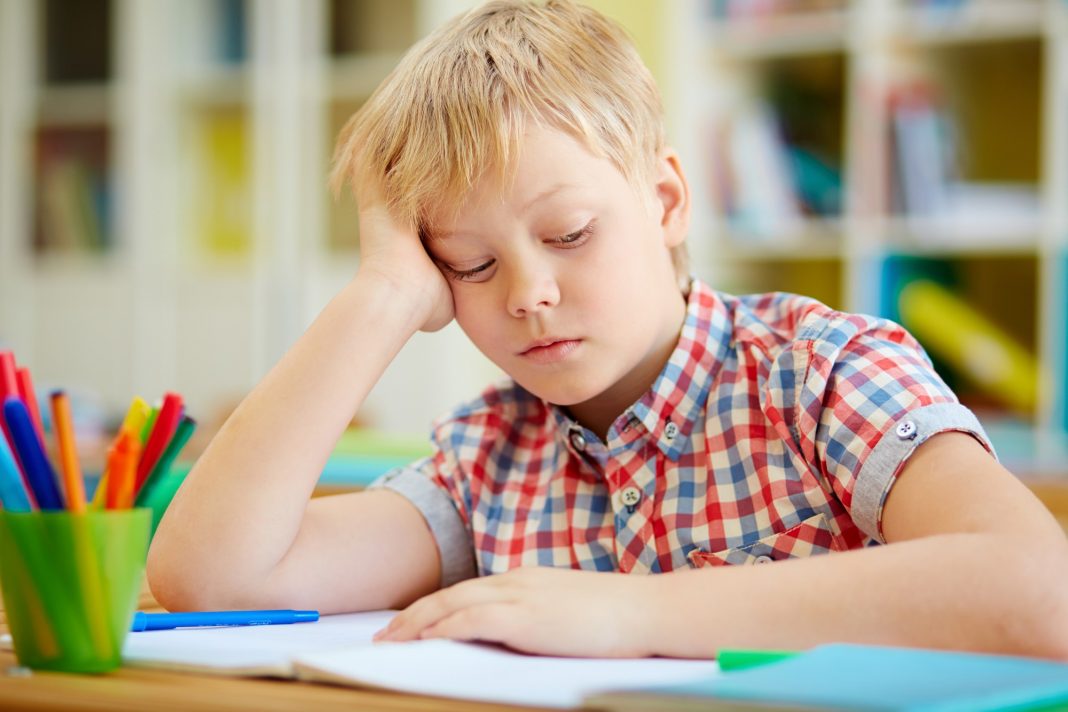Iron is required by the body in the formation of red blood cells, which is vital for delivering oxygen around the body and into muscles, says pharmacy assistant Emma Smallbone from Zammit Street Pharmacy in Deception Bay, Queensland. Anaemia, she adds, is a medical condition where there aren’t enough red blood cells in the body to transport that oxygen, which can make an anaemic person feel tired, weak and dizzy.
A person with anaemia may even “look pale and yellowish”, she says, underscoring the importance of parents seeing their family doctor for formal diagnosis “if you suspect your kids have anaemia”.
“Kids can feel tired during the day, even after a full night’s sleep,” Ms Smallbone says.
“They may experience increased sweating, loss of appetite, breathlessness, and even have disruptive behaviour.
“It might be worth having a chat with your children’s teacher to see if they’ve noticed any changes during the school day, as this information will be helpful to your child’s doctor if you’re seeking a diagnosis.”
Pharmacy assistant Tori McRae-Field, Business Development Manager at Direct Chemist Outlet, Torrensville, South Australia, agrees, adding that “anaemia is when your body doesn’t have enough red blood cells, typically due to an iron deficiency”, and while it’s typically diagnosed “through a blood test”, common symptoms include “dizziness, fatigue, headaches and irritability”.
“Anaemia shouldn’t be left untreated as this can cause many problems, including damage to your organs due to not having enough red blood cells in your body,” she says.
“However, anaemia is easily diagnosed with a blood test and is easily treated. If parents are concerned about anaemia, it’s best they ask [about it] at their child’s next doctor’s appointment or book an appointment to see their doctor.”
Ms Smallbone echoes this recommendation.
“Seek advice if you’re noticing changes with your child,” she says.
“They may be tired and lethargic, have a loss of appetite, have behavioural issues, be breathless and even be prone to repeat infections. Long term, [that] can lead to slower growth for your child, so seeking early intervention is crucial.”
Accredited Practising Dietitian and spokesperson for Dietitians Australia, Lisa Donaldson adds, “Anaemia is a deficiency in the number or quality of red blood cells in your body. It’s also characterised by a low level of haemoglobin, which is the part of red blood cells that carries oxygen around the body.”
“When someone has anaemia, their heart has to work harder to pump oxygen around their body, and even harder when exercising,” she says.
“This is why those with anaemia will experience fatigue and feeling faint.”
Poor diet and blood loss, she adds, are the most common causes of anaemia.
“You might notice that your child is very tired, out of breath or has ongoing poor appetite,” Ms Donaldson says.
These are signs they might have anaemia, she suggests, adding that other signs and symptoms of iron deficiency anaemia include:
- Behavioural problems.
- Increased sweating.
- Strange food cravings, such as eating dirt.
- Not growing at the expected rate.
“If you’re concerned your child may be anaemic, a blood test looking at haemoglobin and iron levels can be a good place to start,” she says.
How to manage anaemia
Ms McRae-Field says that for those trying to manage anaemia with diet, “you need to increase the amount of iron-rich food that you’re consuming”.
Leafy green vegetables, lean red meats, nuts and seeds are among the food options she suggests for managing the condition.
According to Ms Smallbone, good sources of iron also include pork, seafood, poultry and iron-fortified foods – for example, cereals and breads with added iron. But she warns that it’s important to pair iron-rich foods with foods that will help the body absorb this iron.
“Having 100mg of vitamin C with an iron-rich meal can increase the absorption of iron [from that meal] by 67%,” she says. “It makes sense to serve an iron-rich meal with some dark leafy greens, broccoli, capsicum or some citrus fruits like kiwi fruit or strawberries.”
Ms Smallbone continues: “Children following a vegetarian/vegan diet or who may be fussy eaters may need some more assistance with iron supplementation in their diet.”
Ms Smallbone says “a variety of brands” target anaemia in children, and their products are available in retail pharmacy, but it’s “important to read the label”.
“The iron supplement market will have a variety of strengths available because children’s needs are different,” she says.
“Many come with added vitamin C, activated B vitamins, vitamin D and multivitamins to assist absorption, energy and growth.
“There are also iron supplements found in the ‘pharmacy medicine’ schedule in pharmacies. These lines are stronger and need to be given under the strict supervision of the child’s doctor with a dosing guide, so the parent will need these items on a prescription, for safe, accurate dosing.”
Ms Smallbone cautions that iron can be dangerous when dosed incorrectly in infants and young children, so correct dosing is essential.
Ms Donaldson (APD) also offers a note of caution in terms of the role of vitamins, minerals and supplements.
“Vitamin and mineral supplements can be helpful for those with an inadequate diet, but a consultation with a GP and dietitian should always come first,” she said. “A blood test will indicate if there’s an urgent need for supplementation. Inappropriate intake of supplements can be harmful if not required.”
To read the full feature as it appears in this month’s issue of Retail Pharmacy Assistants magazine, visit: rpassistants.com.au/magazines/retail-pharmacy-assistants-april-2021/






